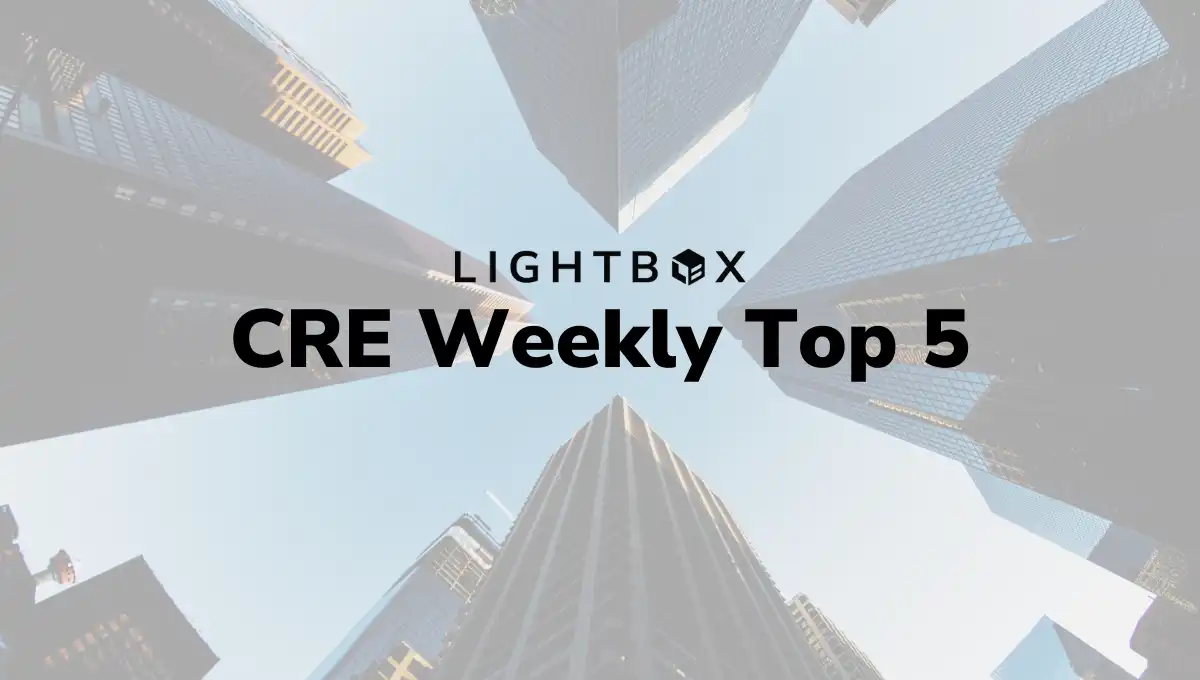This week, the commercial real estate (CRE) market eagerly awaits what now seems like an almost-certain interest rate cut at the September meeting. Office leasing deals continue to run counter to the narrative about shrinking office footprints and a growing refrain that the CRE transactions market has finally hit bottom lends credibility to the LightBox CRE Market Activity Index which began seeing a market pivot back in March/April.
Here is our top 5 list of the week’s biggest CRE developments and why they matter:
- The latest Fed minutes point to an interest rate cut at next month’s FOMC meeting.
While the first interest rate cut in four years seems imminent, the question is how much? And will the FOMC see downside risk in the labor market? Powell’s comments on Friday (Aug. 23) at the Jackson Hole Economic Policy Symposium were notable as the strongest declaration that the Fed is ready to cut rates at their Sept. 17-18th meeting, but he stopped short of predicting how big the first cut would be or how many would follow, noting: “The direction of travel is clear, and the timing and pace of rate cuts will depend on incoming data, the evolving outlook, and the balance of risks.”
Why It Matters: The first rate cut will be an important first step toward giving investors a more direct path towards stability and a more manageable (albeit moderate) cost of capital. The initial psychological impact is likely to boost confidence and loosen the wheels of lending and investment in a way that the market hasn’t seen in more than two years.
- Retail earnings data points to bifurcated, but still positive, spending
Recent reports from major retailers paint a picture of value-seeking consumers who favor retailers like Walmart, Target, and T.J. Maxx over Trader Joes, Whole Foods, and Macy’s. While spending on home improvement leaders like Home Depot and Lowe’s is weakening, Walmart’s quarterly U.S. sales (excluding fuel) rose 4.2% from a year earlier.
Why It Matters: Shifts in retail spending are not only a strong economic barometer, but also highlight which sectors of the industry are struggling and may be at risk versus others that are performing well and may even be expanding their network of stores to fill empty space.
- LightBox ScoreKeeper data points to strong environmental due diligence activity in smaller metros.
An analysis of LightBox’ Phase I environmental site assessment (ESA) activity revealed that outside of the top echelon of the 10 biggest markets, there were much higher growth rates in some smaller metros. Leading metro growth in Q2’s Phase I ESA volume were Denver (64%), Miami (36%), and Washington, D.C. (24%), all of which performed well above the 14% U.S. industry benchmark.
Why It Matters: Growth in Phase I ESA volume in these metros could well translate into stronger Q3 or Q4 transaction activity since it represents a strong signal that the due diligence that precedes deal closing is on the upswing, and that investors are focused on investment opportunities in smaller primary metros rather than in the largest three markets NYC (14%), Los Angeles (13%), and Chicago (9%).
- All signs point to the CRE market reaching bottom.
The number of news headlines proclaiming that the CRE market has finally hit bottom is growing, with midyear transaction levels rise to match those of last year. The LightBox CRE Monthly Activity Index, the industry’s cross-segment barometer of key functions (appraisals, environmental due diligence, and property listings) that support CRE dealmaking, first began to show a thaw in March, and was then followed by four more consecutive months of upticks.
Why It Matters: Although August is traditionally a slow month in the summer season, it will be interesting to see if the Index, which came in at 92.4 in July, continues the positive trend of the past five months. The year-over-year comparison will be more meaningful than a comparison to the prior month given that August is traditionally a slow month for CRE activity as summer winds down. If the Index rises compared to last August, it will be a meaningful sign of the growing strength of the market even in advance of the first rate cut.
- The post-pandemic focus on office space reduction is waning.
CBRE’s annual 2024 Occupier Sentiment Survey revealed that the percentage of companies that anticipate reducing their office footprints fell to 37% from 53% in 2023. This stat is meaningful as it suggests that office space demand may not decline quite as much as initially projected post-COVID. This week’s news of new leases in the office sector includes Bank of America signing a 10-year lease renewal for a major office campus in Addison, TX; one of Atlanta’s largest law firms relocating its headquarters for the first time in nearly four decades; and Zurich closing a deal to sublease a major section of its Schaumburg, IL headquarters to ADP.
Why It Matters: Most companies that intended to downsize their office space have already done so. While additional reductions may occur, especially as leases expire, they are likely to happen at a slower pace than in recent years. This suggests that forecasts for office vacancies may not be as dire as previously anticipated, particularly for office space with desirable employee amenities.
For more commentary on these CRE developments and more, tune in to the LightBox CRE Weekly Digest podcast.
Did You Know of the Week
Did you know that LightBox serves over 1,000 banks on our lender due diligence and appraisal procurement platforms? And that more than $100B in loans are processed through our platforms every year?
